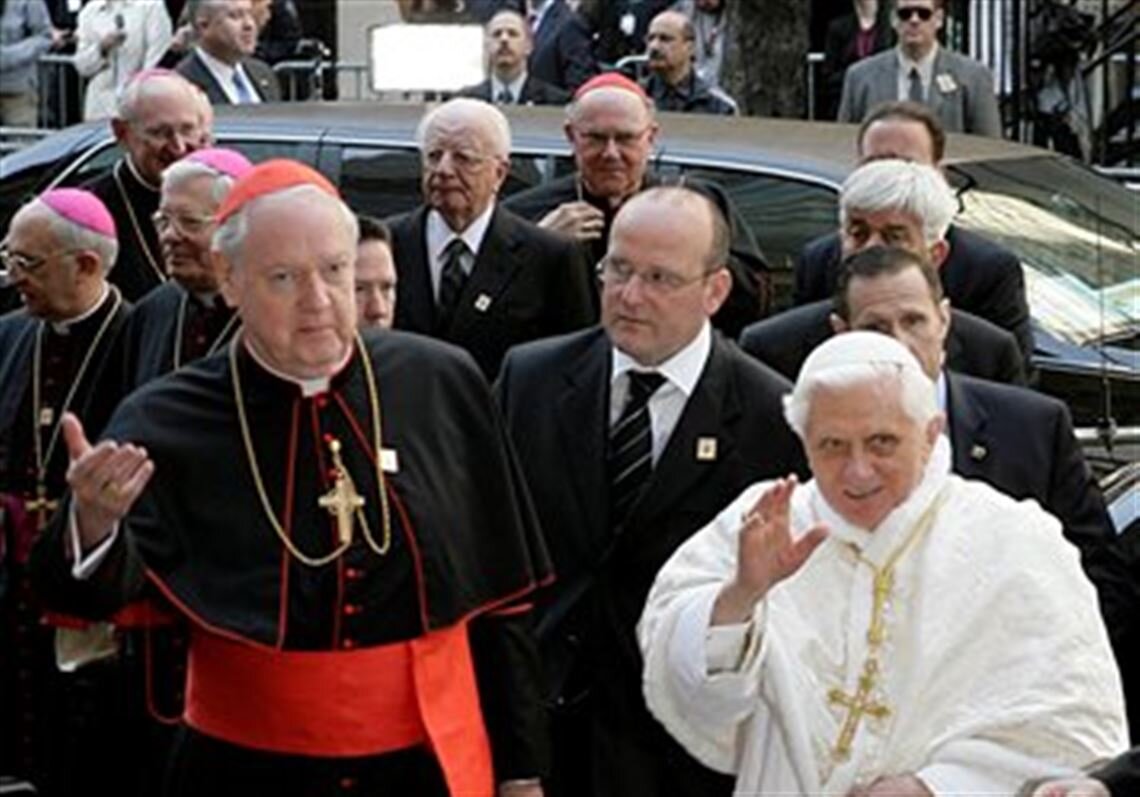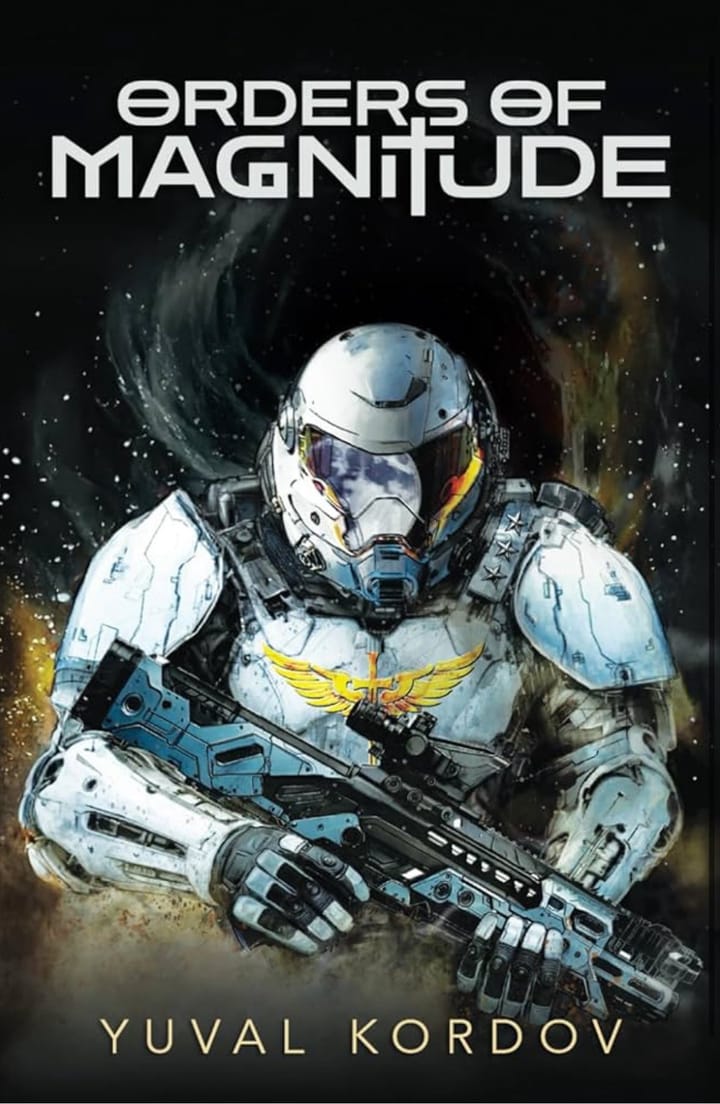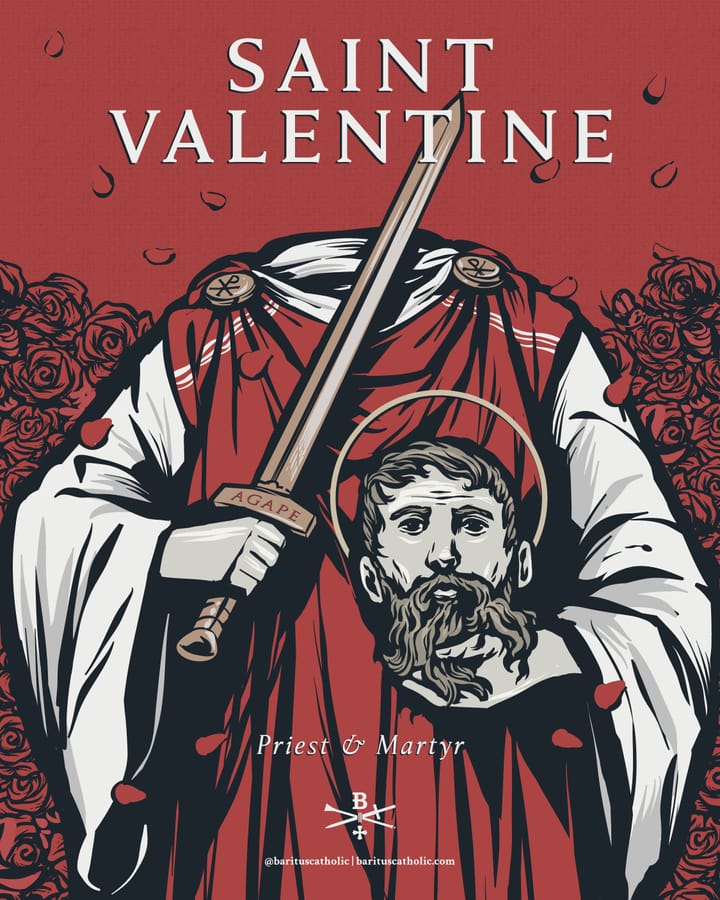The Long View 2008-04-20 through 26: Spot Shortages; The Markets are Right; The Ark of Truth; God and Guns; Make Us New Creatures; The Day I Saw Pope Benedict XVI

John didn’t mention the reason in the blog entry here, but he appeared to be experimenting with collecting several days worth of short comments into one post.
The most notable item here is a stream-of-consciousness style report of hanging around Central Park waiting for Pope Benedict XVI to drive by during his visit to New York City in 2008. It is an interesting reflection on modern day public spectacle, although at this remove it seems almost idyllic compared to the past few years.
Tuesday, April 22
Spot Shortages
Anyone in need of a few minutes of panic will be pleased to see this item:
MOUNTAIN VIEW, Calif. — Many parts of America, long considered the breadbasket of the world, are now confronting a once unthinkable phenomenon: food rationing.
ROMEO GACAD/AFP/GettyClick to enlarge>Rice is stored at a National Food Authority warehouse at Manila, the Philippines, on April 17.Major retailers in New York, in areas of New England, and on the West Coast are limiting purchases of flour, rice, and cooking oil as demand outstrips supply. There are also anecdotal reports that some consumers are hoarding grain stocks.
I would be more impressed if I had not bought a big bag of rice over the weekend without having to club too many people. Still, many people and most institutions buy in bulk, so this sort of thing can become quickly conspicuous. The rumor could start real shortages.
The Markets are Right.
Asia Times Spengler wrote:
The global food crisis is a monetary phenomenon, an unintended consequence of America's attempt to inflate its way out of a market failure. There are long-term reasons for food prices to rise, but the unprecedented spike in grain prices during the past year stems from the weakness of the American dollar. Washington's economic misery now threatens to become a geopolitical catastrophe...Reduced to essentials, America's foreign policy sought two unattainable objectives: to stabilize the Middle East and destabilize China. That is an exaggeration, of course, for Washington hoped not to sow instability, but only to put China in its place over the Tibetan affair.
Market failure? I think not. The market is accurately reflecting what happens when lenders are encouraged to make high-risk consumer loans for essentially political reasons. They are also reflecting what happens when the issuer of a major currency pretends that fiscal policy is not a feature of macroeconomic policy.
"Deficits don't matter," said Dick Cheney.
Yes they do.
They matter a lot.
Monday, April 21
The Ark of Truth
Last night I viewed Stargate - The Ark of Truth [Amazon link], the finale to the long, long-running Stargate SG-1 series. Essentially, it's a two-hour made-for-TV movie that wraps up the last couple of seasons of the series. The SciFi channel declined to renew it, so closure for the series was possible only by way of this not-yet-broadcast DVD. I am glad I bought it, though I am actually a relatively recent fan.
If you have not seen the series, there would be little point in my trying to explain the story arc. The premise is that archeologists discover a hyperspacial gate, left on Earth by an ancient extraterrestrial civilization, that gives access to similar gates on other planets. A secret government research agency goes exploring through the gates. Over the past ten years, there have been many stand-alone adventures, but chiefly the agency fights alien species that pretend to be gods and thereby enslave primitive societies.
The legend of SG-1 is that it was a big goof whose primary function was to allow the ensemble of actors to horse around in the woods of British Columbia. This may or may not be true. Still, no matter how campy the episodes may sometimes have been, everyone always took care to maintain the narrative integrity of the stories (the special effects and music were very good, too). This is in stark contrast to the recent revival of Doctor Who, which scarcely troubles to gesture at motivation, and which fails to meet even the undemanding technical verisimilitude requirements of television science fiction. Yes, it's for kids, but kids love hard-science fiction.
My only problem is the SG-1 series (though not with Stargate Atlantis, which continues in production) is that battle against false gods is never seriously distinguished from the struggle against religion in general. This was especially the case with the war against the disembodied Ori and their Latin-speaking hierarchy of crusading ex-human Priors. The series displayed a Maple Leaf insignia wherever possible, but the characters were mostly Canadians in American-military drag. Surely it should have occurred to the screenwriters at least once that an agnostic American Special Forces unit added an unnecessary layer of implausibility?
* * *
God and Guns
Perhaps seeking to redeem the conceptual deficiencies of SG-1, the notoriously Canadian Mark Steyn offers these reflections on the comparative advantages of the United States: God and Guns - The only healthy way to fly. He writes with particular reference to Senator Obama's ill-received remarks about the bitterness, piety, and highly armed nature of rural America:
In my book America Alone, I note a global survey on optimism: 61 per cent of Americans were optimistic about the future, 29 per cent of the French, 15 per cent of Germans. Take it from a foreigner: In my experience, Americans are the least “bitter” people in the developed world...I think a healthy society needs both God and guns: it benefits from a belief in some kind of higher purpose to life on earth, and it requires a self-reliant citizenry. If you lack either of those twin props, you wind up with today’s Europe — a present-tense Eutopia mired in fatalism.
With very few exceptions, Americans don't have guns for the sake of "self-reliance"; they have them to shoot small animals. Gun-owners of my acquaintance are civil servants or political lobbyists. Neither is the correlation between armament and piety very strong. As we have noted here before, one of the strategies being contemplated in Democratic Party circles is to trade Second Amendment rights to the libertarian-minded voters of the Mountain States and the Northern Midwest in return for acquiescence in every other item of the Cultural Left agenda. I know pious people, and I know fervent hunters, but I have seen only limited overlap between these groups.
* * *
Make Us New Creatures
I was flipping through the local cable listings, and I saw a station with many Korean programs. Among them was the English-language title, "Make Us New Creatures." No doubt this is a religious program. Still, I could not help but reflect that, in Jasper Fforde's world, it could be a how-to show.
* * *
Sunday, April 20
The Day I Saw Pope Benedict XVI
I caught only a little of the Mass that Benedict said at St. Patrick's Cathedral in Manhattan yesterday. From what I did see, though, the liturgy almost might have been designed to accommodate the objections to the papal Mass at Washington on April 17, which some commentators had seen as too multi-culti and easy-listening. To be fair, of course, the Mass today was said in a cathedral, which was built for a traditional liturgy, while the Mass at Washington was said in a baseball stadium, which was built for popular spectacle.
Encouraged by these signs of progress, and since it was as fine a spring day as you could ask for, I took the Port Authority (PATH) train under the Hudson River to Manhattan to see Benedict himself, as he went north on Fifth Avenue from St. Patrick's Cathedral to St. Joseph's Seminary in Yonkers.
Manhattan is essentially a rectangle oriented north-to-south. (Frankly, I become confused in any city that is not laid out that way, which is most places.) Fifth Avenue runs up the center of it. Madison Avenue parallels Fifth a block to the east; Park Avenue parallels Madison a further block east. The PATH let me off at 33rd Street. I walked north on Fifth Avenue. St. Patrick's is on 50th Street, but the Papal Green Zone, I found, began at 47th Street. Fifth was blocked off there, by relaxed but very numerous New York City police. To go further north, you needed a ticket, either to the Cathedral (a rare commodity) or to the curbside viewing areas to either side of Fifth.
Being ticketless, I went east to Madison. That was blocked off, too. I continued to Park, where I could go north, after a fashion. The sidewalk was thick with clergy leaving St. Patrick's. There was every sort of habit and order, including some I did not recognize. I saw one fellow in a cope but no one with a mitre. All these people were boarding charted buses, to take them back either to their rectories and monasteries, or onward to Yonkers. Someone was holding a sign in front of the Yonkers buses designating them as such. I resisted the temptation to climb in.
At 57th Street, I could return to Fifth Avenue, which was, of course, closed to traffic throughout the event. Fifth Avenue to the south was wholly blocked by reserved viewing areas, all very densely crowded. Curbside for several blocks north of 57th was reserved, too; however, the inner sidewalk from that point was open to pedestrians. Walking up Fifth, I saw that Benedict was going to get a very strange idea of Catholicism in the US if he relied on the signs and banners he would see. Most of them belonged to the Neo-Catecumenate Movement, a legitimate lay group, but one to which a few years ago then Cardinal Ratzinger had had occasion to issue criticism regarding their eccentric liturgical and disciplinary practices. Their chapters from all over the country had sent delegations, it seems. They had the only banner in German I remember seeing: Süßer Christus auf Erden! "Sweet Christ on Earth!" sounds like an expression of mild exasperation to me, but maybe the phrase is idiomatic.
Central Park is on the westside of Fifth Avenue after 60th Street, and the eastside then no longer hosts businesses, but luxury apartments and the occasional museum. The Avenue is four lanes wide in that area. I was early, so the crowds were still relatively thin. I found a place by the guard rail between 63rd and 64th Streets. The soundtrack for the event, at least where I was standing, was provided by a Spanish Neo-Catecumenate ensemble of untrained singers, tambourines, and drums. The effect was less like music than like the summer I worked in a metal stamping plant. Still, though I waited for an hour, there was no lack of things to see.
An Anti-Pope came by on the other side of the street. He wore canonical robes and a felt tiara, on the top of which perched a large, green parrot. A little troupe of followers pursued him wherever he went. A little later, I met someone I knew, a Feeneyite who used to attend the Latin Mass at my parish, but had been asked to leave because of his custom of leafleting the congregation and rebuking guest speakers for doctrinal inaccuracies. He was leafleting at this event, too, warning the people against the heresies of the Second Vatican Council and the dissimulations of that notorious liberal, Joseph Ratzinger. He gave me some dogmas to read on the train home.
The only protest sign I saw was one modest placard to the effect that the Vatican shelters child abusers. The fellow carrying it did not seem much interested in displaying it until the pope or at least some television cameras were at hand.
Only gradually did I realize quite how much manpower and equipment was involved in policing this excursion of a few miles. The helicopters appeared about a half-hour before the pope did, becoming more numerous and stationary as time went on. Small motorcycle patrols moved past at intervals. Every cop in New York seemed to be there; and unlike the cops at other major events I have seen in New York, these were alert, politely but carefully inspecting the crowd. There was van after van of Secret Service agents moving up and down the street. You could tell they were Secret Service because it said so on their bullet-proof vests. Slightly older Secret Service agents in brown jackets and baseball caps chatted amicably with the police. There were Secret Service agents, dozens of them, who might have been secret, in the sense that they were wearing civilian clothes, but they appeared only in the company of the Popemobile; a five-mile-an-hour walk is a dead giveaway.
By the time the pope arrived, the crowd were I was standing was dense. The reception as he passed was friendly and cheerful rather than raucous: people clapped rather than shouted. Benedict himself looked like a man who sees the joke of his situation: he seemed genuinely good-humored as he waved to the crowd. Also: close up, he does look like an 81-year-old man. Two other people were in the Popemobile with him, with their backs to the front, sitting a on low bench that made them inconspicuous. One was a cardinal. almost certainly Cardinal Eagan of New York. The other was a gray-haired man in a Roman collar.
An immense line of limousines followed the Popemobile, but I did not wait to see who might be in them. That was true of most of the other spectators too.
Copyright © 2008 by John J. Reilly



Comments ()